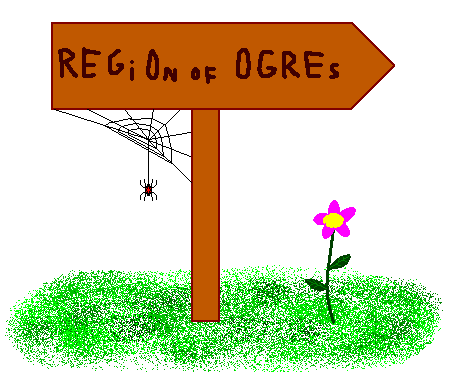CF1097E.Egor and an RPG game
普及/提高-
通过率:0%
AC君温馨提醒
该题目为【codeforces】题库的题目,您提交的代码将被提交至codeforces进行远程评测,并由ACGO抓取测评结果后进行展示。由于远程测评的测评机由其他平台提供,我们无法保证该服务的稳定性,若提交后无反应,请等待一段时间后再进行重试。
题目描述
One Saturday afternoon Egor was playing his favorite RPG game. While discovering new lands and territories, he came across the following sign:
 Egor is a passionate player, but he is an algorithmician as well. That's why he instantly spotted four common letters in two words on the sign above — if we permute the letters "R", "E", "G", "O" from the first word, we can obtain the letters "O", "G", "R", "E". Egor got inspired by the sign and right away he came up with a problem about permutations.
Egor is a passionate player, but he is an algorithmician as well. That's why he instantly spotted four common letters in two words on the sign above — if we permute the letters "R", "E", "G", "O" from the first word, we can obtain the letters "O", "G", "R", "E". Egor got inspired by the sign and right away he came up with a problem about permutations.
You are given a permutation of length n . You have to split it into some non-empty subsequences so that each element of the permutation belongs to exactly one subsequence. Each subsequence must be monotonic — that is, either increasing or decreasing.
Sequence is called to be a subsequence if it can be derived from permutation by deleting some (possibly none) elements without changing the order of the remaining elements.
The number of subsequences should be small enough — let f(n) be the minimum integer k such that every permutation of length n can be partitioned into at most k monotonic subsequences.
You need to split the permutation into at most f(n) monotonic subsequences.
输入格式
The first line contains one integer t ( 1≤t≤105 ) — the number of test cases.
You can only use t=1 in hacks.
Next, descriptions of t test cases come, each of them in the following format.
The first line of a single test case contains one integer n ( 1≤n≤105 ) — the length of the permutation. The second line contains n distinct integers ai ( 1≤ai≤n ) — the permutation itself.
The sum of the values of n over all test cases doesn't exceed 105 .
输出格式
For each test case print the answer in the following format:
In the first line print k ( 1≤k≤f(n) ) — the number of the subsequences in the partition. In the next k lines, print the descriptions of found subsequences. Each description should start with a number li ( 1≤li≤n ) — the length of the corresponding subsequence, followed by li integers — the values of this subsequence in the order in which they occur in the permutation.
Each subsequence you output must be either increasing or decreasing.
In case there are multiple possible answers, print any of them.
输入输出样例
输入#1
3 4 4 3 1 2 6 4 5 6 1 3 2 10 1 2 3 4 5 6 7 8 9 10
输出#1
2 3 4 3 1 1 2 3 2 4 1 2 5 6 2 3 2 1 10 1 2 3 4 5 6 7 8 9 10
说明/提示
In the example, we can split:
- [4,3,1,2] into [4,3,1] , [2]
- [4,5,6,1,3,2] into [4,1] , [5,6] and [3,2]
- [1,2,3,4,5,6,7,8,9,10] into [1,2,3,4,5,6,7,8,9,10]
Surely, there are many more answers possible.